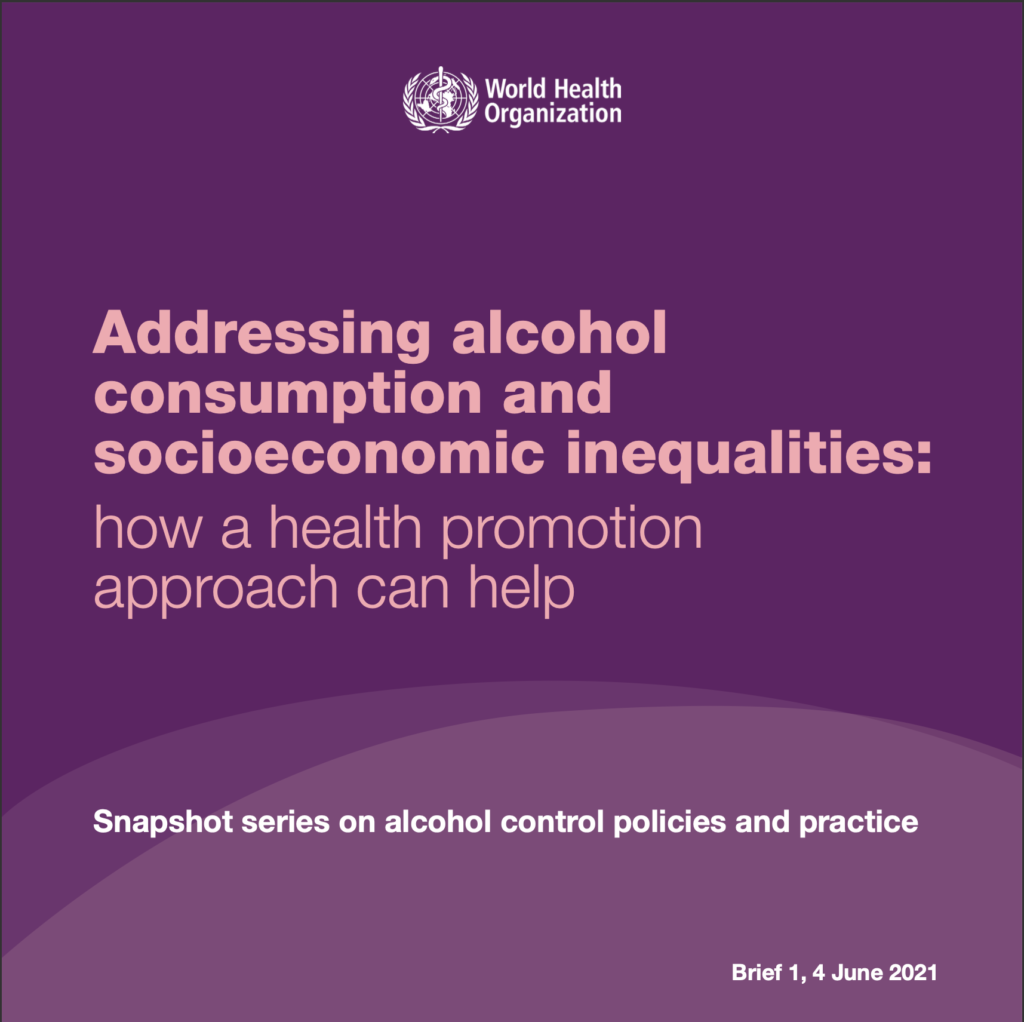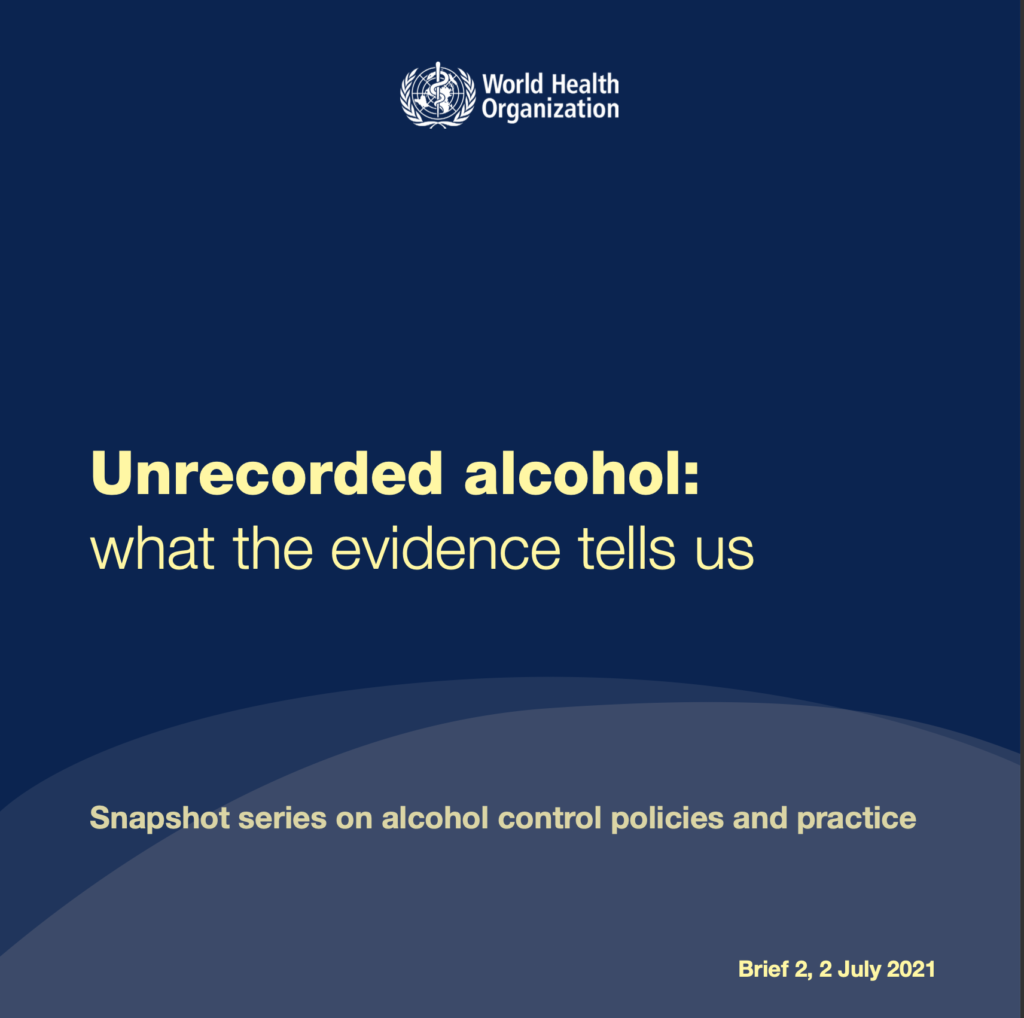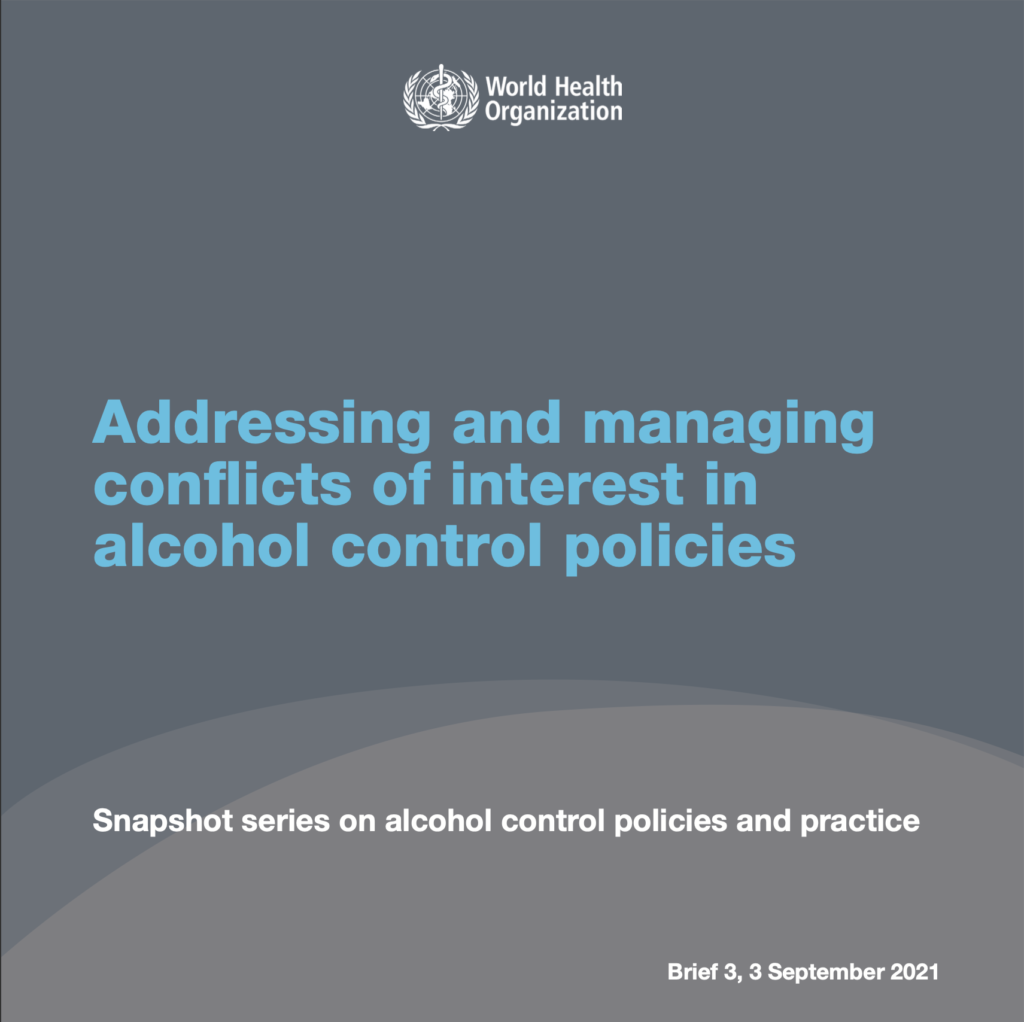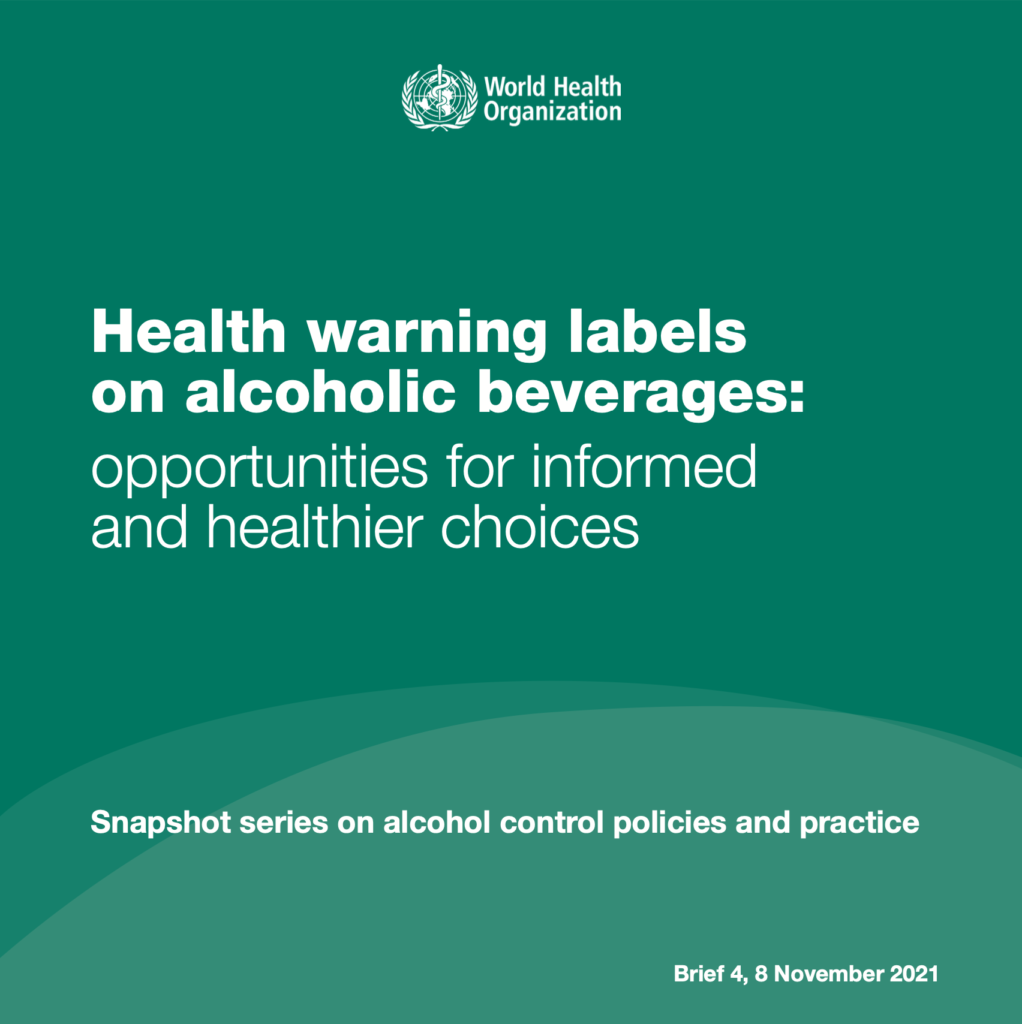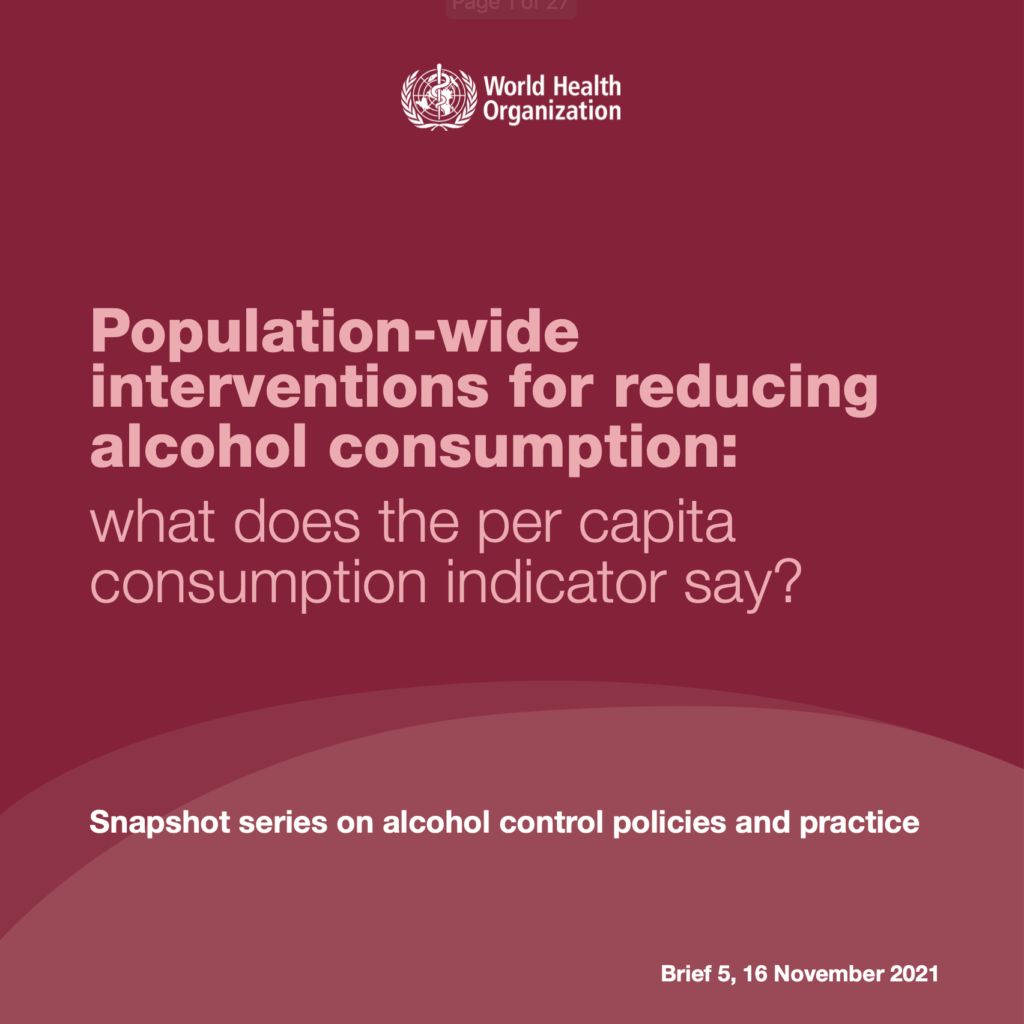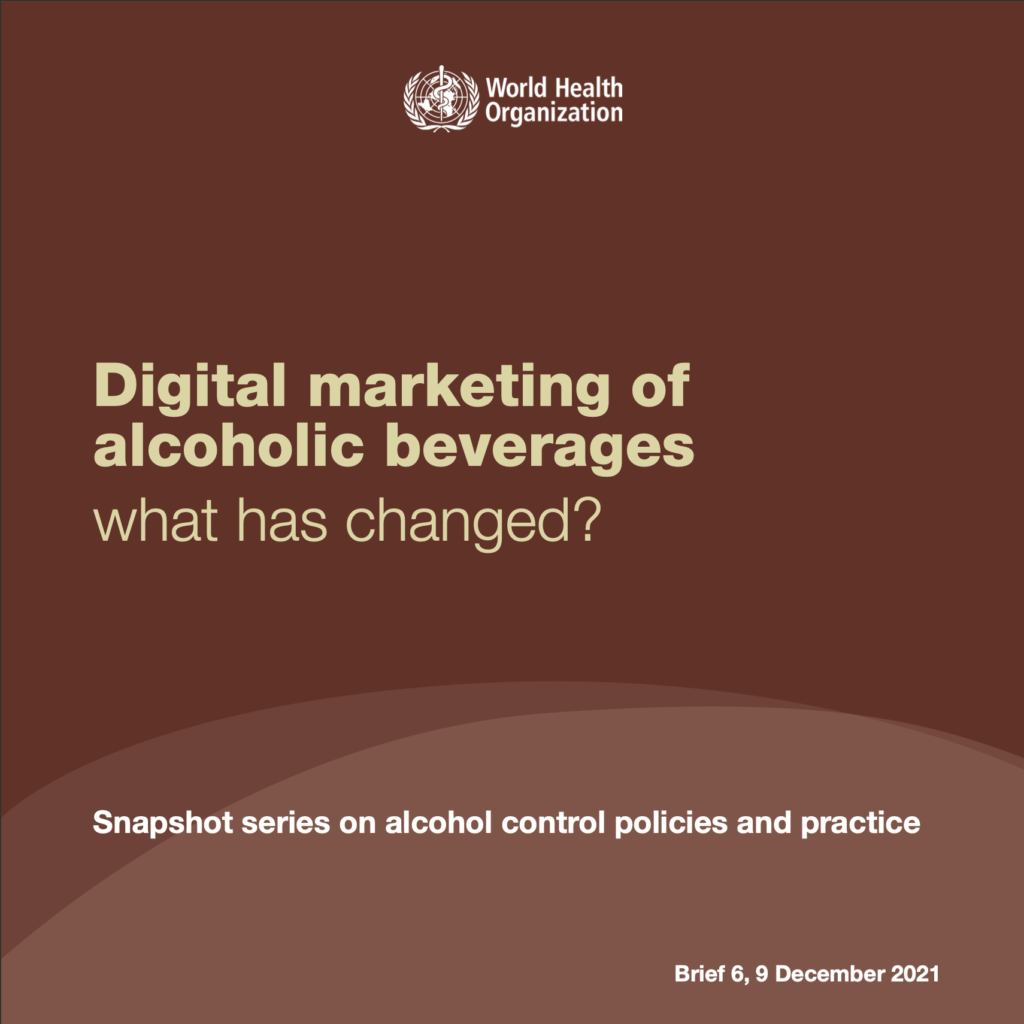The World Health Organization (WHO) has launched a snapshot series of alcohol policies and practices under six topics. The briefs were developed by the WHO Less Alcohol Unit, part of the Health Promotion department at the global WHO Secretariat. The topics of the snapshot series have also been discussed in a series of innovative webinars.
The Snapshot series includes six briefs tackling critical issues related to the determinants driving the acceptability, availability, and affordability of alcohol and how it affects people and their communities.
Content of each brief
- A quick scan of the recent evidence on the topic.
- Insights from leading experts.
- Consultation with selected countries.
- Discussions during webinars convened to create a platform to match evidence, practice, and policies.
Purpose of series
The briefs are intended for a broad audience, including professionals working in public health and local and national alcohol policy focal points, policy-makers, government officials, researchers, civil society groups, consumer associations, the mass media, and people new to alcohol research or practice.
Below is an overview of each brief published by the WHO.
Addressing alcohol consumption and socioeconomic inequalities: how a health promotion approach can help
Alcohol consumption accounts for about 5% of the global burden of diseases but is unequally distributed across socioeconomic groups.
Socioeconomic status has repeatedly been associated with an elevated risk of mortality. For alcohol consumption, the inequalities in morbidity and mortality are especially stark. Nevertheless, substantial evidence indicates that alcohol policy solutions can play an essential role in reducing socioeconomic disparities.
Unrecorded alcohol: what the evidence tells us
An estimated 25% of worldwide alcohol consumption is unrecorded, meaning not taxed and outside the usual system of governmental control.
Recent evidence highlights that effective measures exist to regulate recorded and unrecorded alcohol production and consumption and do not indicate possible substitution effects. The policy options for regulating unrecorded alcohol require tailoring to a given context to consider the cultural and social aspects involved.
Addressing and managing conflicts of interest in alcohol control policies
Overwhelming evidence indicates that industry producing and selling unhealthy commodities have defeated, delayed, or weakened public policies’ design, implementation, and evaluation worldwide. Strategies used include,
- interference in policy development,
- litigation,
- coalition-building through front groups, and
- misusing knowledge or propagating misinformation.
There are irreconcilable differences between governments’ goals, which include protecting and promoting people’s health and well-being and the goals of alcohol companies, which are to pursue private profit maximisation through increased alcohol consumption.
Factors that can undermine the effectiveness of alcohol control policies include,
- corporate social responsibility initiatives,
- narratives related to individual choices,
- moderate and responsible alcohol use, and
- the co-option of public health researchers and universities to collaborate with alcohol industry-funded organisations.
Evidence points to opportunities to reduce conflicts of interest, including
- using evidence to inform the development of alcohol control policies,
- disclosure of research funding, and
- implementing national and regional policies that capitalise on opportunities presented through trade law and negotiations.
Health warning labels on alcoholic beverages: opportunities for informed and healthier choices
Although alcohol negatively affects various health outcomes, awareness about the health risks of alcohol remains relatively low.
WHO recommends labelling alcoholic beverages to increase awareness. Current labelling practices across countries are not standardized as they are with medicine, food products and soft drinks.
The effect of health warnings labels is optimized when reinforced by other policies that curb alcohol consumption.
Experimental studies indicate that warning labels can impact self-reported intention to reduce alcohol consumption. Although health warning labels are talked about as one policy approach to curb the consumption of alcohol, they can be implemented and evaluated in various ways that can affect whether they can be considered effective.
Population-wide interventions for reducing alcohol consumption: what does the per capita consumption indicator say?
Population-wide interventions are the most cost-effective approach to tackle the root causes of and reduce overall alcohol consumption and harm. Many global commitments and surveillance systems use per capita alcohol consumption (APC) to track progress in implementing alcohol policy solutions. The APC presents many advantages as an indicator:
- being readily available,
- extremely reliable,
- comparable across settings, and
- closely associated with alcohol-related harm.
Digital marketing of alcoholic beverages: what has changed?
Exposure to alcohol marketing increases the acceptability of using alcohol, at an earlier age of onset and influences alcohol use behaviors, including heavy episodic alcohol use.
The digital ecosystem provides opportunities for marketing companies to position increasingly covert advertising. These new advertisements target individual consumers based on the data that has been gathered about them, allowing marketers to optimize their strategies.
Policy- and decision-makers concerned to regulate and enforce digital marketing to prevent and reduce harm need to keep pace with the constantly evolving digital marketspace.
More about the WHO Less Alcohol Unit
The Less Alcohol Unit aims at tackling the determinants driving the acceptability, availability and affordability of alcohol in the context of the WHO Global Alcohol Strategy.
The team supports the design of policies and implementation of evidence-based and population-wide interventions that address cultural, social, political, economic and commercial determinants of alcohol consumption.
The Less Alcohol Unit is working closely with the World Health Organization regional and country offices and with the support of a highly qualified network of experts. They also advocate for empowering individuals and communities and for creating healthier settings to prevent harm due to alcohol.
To tackle the multiple dimensions involved in alcohol consumption, we build collaboratives with civil society and academia to synthesize ground-breaking evidence for policymakers and advocate for actions across sectors.
The WHO Less Alcohol Unit also contributes to share innovative approaches for front-line practice to sustain population-wide interventions over time.
